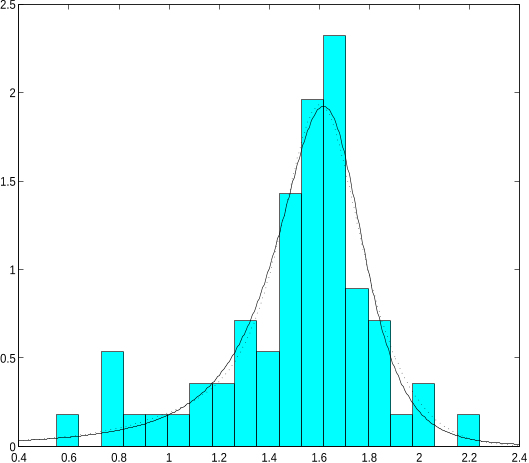













14 citations
14 citations
...[8] Y.Y. Ma and M.G. Genton....
[...]
...[1]; if we take w(x) = αx + β x3, we obtain a matrix variate form of the skew symmetric family introduced by Ma and Genton [8]; or take w(x) = si gn(x)|x |α/2λ(2/α)1/2 to obtain a matrix variate form of the skew symmetric family introduced by DiCiccio and Monti [5]....
[...]
...[1]; if we take w(x) = αx + β x(3), we obtain a matrix variate form of the skew symmetric family introduced by Ma and Genton [8]; or take w(x) = si gn(x)|x |α/2λ(2/α)1/2 to obtain a matrix variate form of the skew symmetric family introduced by DiCiccio and Monti [5]....
[...]
14 citations
13 citations
11 citations
...Let x0 = (xT 0)T, xa = (xT(a/√vλ))T and m∗λ = mλ(0T(a/ √ vλ))T. Assuming normal or SN prior distributions for λ, the computation of the prior and the posterior expectations Eλ( n(λx)) and Eλ|x( m(λy)) (see Proposition 7) is straightforward from the following well-known lemma that can be found in Arellano-Valle and Genton [7], for instance....
[...]
...To cite a few, Ma and Genton [4], Wang et al....
[...]
...For other flexible classes of the SN distribution, see Ma and Genton [4]....
[...]
...An overview of some existent proposals for skewed distributions can be found in the book edited by Genton [10] and in Azzalini [2]....
[...]
...To cite a few, Ma and Genton [4], Wang et al. [5], Genton and Loperfido [6], Arellano-Valle and Genton [7], Arellano-Valle and Azzalini [8], and Azzalini and Genton [9]....
[...]
2,470 citations
...This representation has been used by Azzalini & Capitanio (2003) to define certain distributions by perturbation of symmetry....
[...]
...For K = 1, the pdf is always unimodal as was already noted by Azzalini (1985) for the univariate skew-normal distribution....
[...]
...The case K = 1 corresponds to Azzalini & Dalla Valle's (1996) bivariate skew-normal distribution, which cannot capture the bimodality....
[...]
...For K ¼ 1, the pdf is always unimodal as was already noted by Azzalini (1985) for the univariate skew-normal distribution....
[...]
...In particular, for ,il = ,B2 = /33 = & = 0, the pdf is exactly the bivariate skew-normal proposed by Azzalini & Dalla Valle (1996), and known to be unimodal (see Fig....
[...]
1,719 citations
1,478 citations
1,215 citations
...Finally, note that the stochastic representation of FSSdistributions follows from the stochastic representation of SS distributions described byWang et al. (2004), see also Azzalini & Capitanio (2003)....
[...]
...Similarly, multivariate distributions such as skew-t (Branco & Dey, 2001; Azzalini & Capitanio, 2003; Jones & Faddy, 2003; Sahu et al., 2003), skew-Cauchy (Arnold & Beaver, 2000) and other skewelliptical ones (Azzalini & Capitanio, 1999; Branco & Dey, 2001; Sahu et al., 2003) can be represented by…...
[...]
...Jones & Faddy (2003) and Azzalini & Capitanio (2003) fit two forms of skew-t distributions to these data....
[...]
...If each term has an odd order (all ks are odd), then the polynomial is called an odd polynomial, whereas if each term has an even order (all ks are even), it is called an even polynomial....
[...]